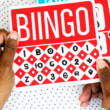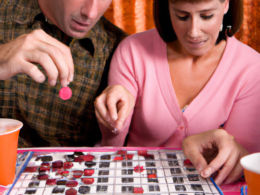There is no one-size-fits-all answer to this question, as the rules and mechanics of bingo vary from game to game. However, in general, bingo is a simple game that involves players removing cards from a stack in the hope of scoring points.
The player with the most points at the end of the game wins.
One common bingo card consists of a number of squares, each corresponding to a particular number (1 through 26). Players choose a card from their hand, and then place it on one of the squares on their card. If the number in the square matches the number on the player’s card, they can mark it off as a win.
The player then takes another card from their hand and repeats the process, continuing until all cards have been used or until the player reaches 21 points. At that point, they win the game and receive any bonus prizes that may have been awarded.
There are a few things to keep in mind when playing bingo. First and foremost, it’s important to be organized – players need to know which squares correspond to which numbers so they can make quick decisions about which cards to play.
Secondly, it’s important to have enough cards – if players run out of cards before reaching 21 points, they’ll have to forfeit their turn and wait for someone else to get a chance. Finally, it’s also helpful to use bingo markers or dice – these can be used to help keep track of who has won which squares, and can also be used as randomizers when drawing cards during gameplay.








